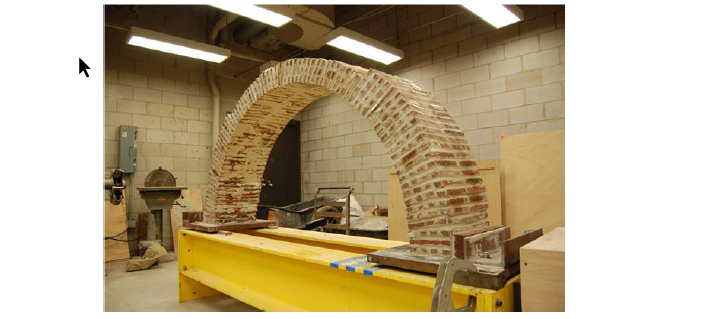1 Assistant Professor, Department of Civil Engineering, University of Manitoba, Winnipeg, MB, R3T 5V6, Canada, Fariborz.hashemian@ad.umanitoba.ca
2 Engineering System Inc., Aurora, Illinois, crfischer@esi-il.com
3 Research Engineer, Department of Civil and Materials Engineering, University of Illinois at Chicago, Chicago, Illinois, USA, ttaylo20@uic.edu
4 Professor and Head, President of ISHMII, Department of Civil and Materials Engineering, University of Illinois at Chicago, Chicago, Illinois, USA, fansari@uic.edu
5 Professor Emeritus, Department of Civil Engineering, University of Manitoba, Winnipeg, MB, R3T 5V6, Canada, amufti@mitacs.ca
ABSTRACT
Brick masonry arches have been used for centuries in countless historic m asonry structures and bridges. T hese structures have been in -service for m any years and most have passed their designed service life but are showing major signs of deterioration. In order to create effective and practical methods of rehabilitation, m any research programs are being conducted to better understand these structures. One of the m ost important aspects of the res earch is to accurately determine the material properties of the structures under study. Current methods of constructing test prisms of material with prop erties similar to the original materials in the structure do not offer accurate values due to the fact that the pr isms are constructed using new m aterials. While the new materials have properties co mparable to the original material, they are s till dissimilar because they have not deteriorated to the level of the original material.
A recent study conducted jointly by researchers at the University of Manitoba (U of M) and the University of Illino is at Chicago (UIC), inve stigated methods for m ore accurately computing material properties by using data gained from real-time Structural Health Monitoring (SHM). Researchers at the UIC developed and im plemented a SHM system on the Brooklyn Bridge in New York and fabricated several scale m odels of the arches to develop a strategy to determ ine the safety criteria for th e structure. Researchers from U of M used one of the scale m odels to develop a computational method of using strain gauge data from the SHM system to estimate the modulus of elasticity of the material.
KEYWORDS: effective modulus of elasticity, shear modulus, brick arch, arching action, structural health monitoring
531.pdf



